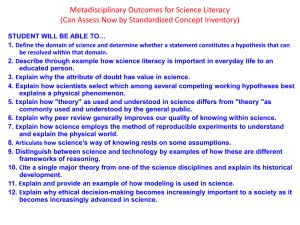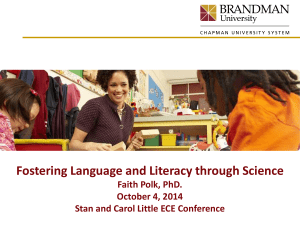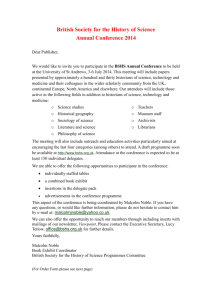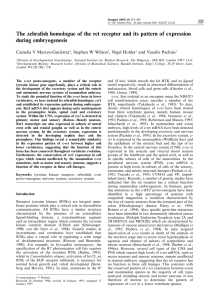introduction
advertisement
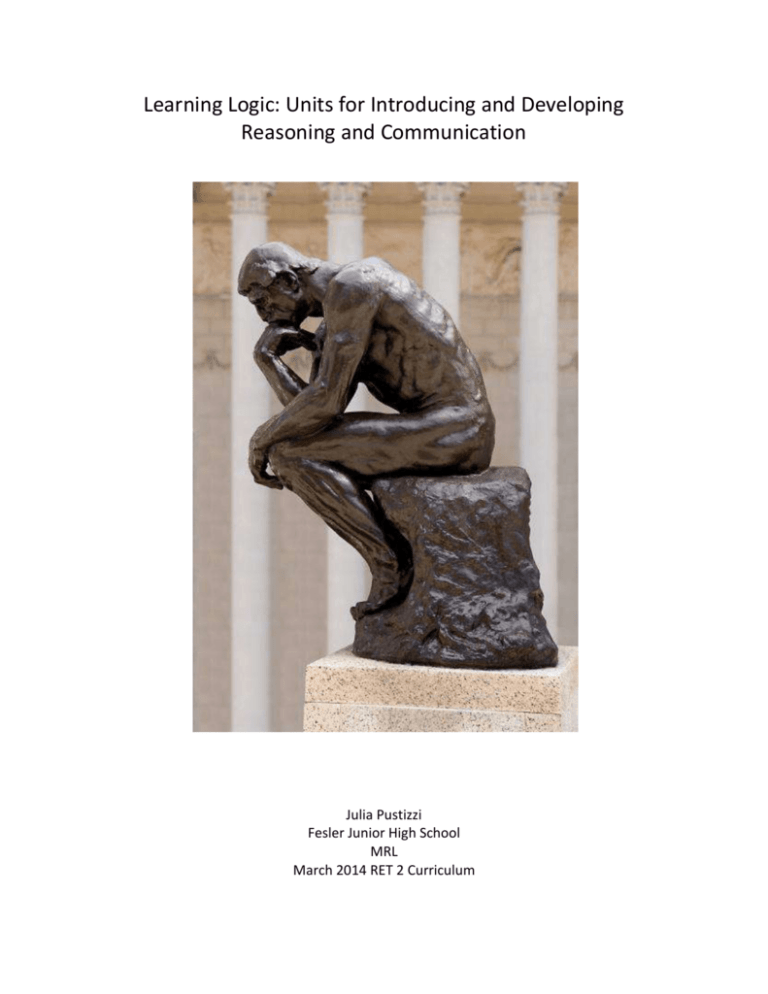
Learning Logic: Units for Introducing and Developing Reasoning and Communication Julia Pustizzi Fesler Junior High School MRL March 2014 RET 2 Curriculum Table of Contents Abstract Teaching Standards Unit 1: Logic Unit Outline Day 1: Introduction to Logic Puzzles Day 2: Appropriate and Relevant Clues Day 3: Introduction to Claim-Evidence-Reasoning Day 4: Motion Puzzle Inserts Insert 1: Mystery Liquids Insert 2: Conservation of Matter Insert 3: Separating Mixtures Insert 4: Unknown Ring Insert 5: Sick at a Party Blank Insert Unit 2: Crystal Mystery Unit Outline Day 1: Introduction and Unit Cell Building Day 2: Guided Reading Day 3: Solving the Mystery Day 4: Making the Claim Day 5: Writing the Procedure Day 6: Regrowing the Crystal Rubrics for Scoring Abstract This portfolio comprises three curriculum pieces designed to develop middle school students’ use of reasoning and logic in the science classroom. This portfolio is designed to supplement the classic middle school curriculum, introducing students to logic, teaching students to articulate logic, and then asking them to use logic repeatedly through the school year. In the introductory lesson, students use logic puzzles to make claims, and then learn to substantiate their claims using the Claim-Evidence-Reasoning format. As a supplement to this unit, provided are a series of curriculum inserts for use in the 8th grade physical science classroom. These inserts are one-page documents that ask students to make and substantiate a claim using the format used above. The last unit of the series asks students to use their reasoning skills to identify a crystal of unknown substance and then develop a method to regrow that crystal. Rationale As a science teacher, one of my primary goals is to prepare students for careers in science, should they choose that path. While I have been teaching “the standards” for the past 4 years, I haven’t been teaching students the skills necessary to become scientists. These units provide students with the opportunity to develop into real scientists. Students are not only learning the information but also learning what information is important, how to gather information, how to interpret that information, and how to communicate their interpretations. Learning Objectives At the completion of these units, students should be much stronger critical thinkers, and also much stronger communicators. Students, when presented with relevant data, should be able to make a claim based on that data. Moreover, as they progress through the units, students should be able back up those claims with reasonable evidence, and explain why that evidence supports their claim. RET1 My experience in RET1 has substantially impacted my teaching, and this unit has stemmed directly from skills garnered during my experience in RET1. My time in RET 1 was spent developing technologies for use in hydrogen fuel cells. Since a hydrogen fuel cell requires the expensive metal platinum for a catalyst in its reactions, we were focused on ways to reduce the amount of platinum needed in a fuel cell. Specifically, we were using electrodeposition to deposit platinum on a surface, examining how and where platinum deposited when different electric potentials were applied. Having an experience in a lab allows me to understand what I am preparing my students for; without the experience in RET1, my teaching would be far less directed. Specifically, I have learned to emphasize reading complex texts, talking with experts, collecting relevant data, analyzing data appropriately, working with unknowns, and of course, reasoning and articulating reasoning. Teaching Standards Below are listed the teaching standards addressed by these units. These middle school units are framed using the Next Generation Science Standards (NGSS) and the Common Core State Standards (CCSS), but can be modified for use in the high school classroom. The CCSS for science are divided into either Reading Standards for Literacy in Science and Technical Subjects (RST) or Writing Standards for Literacy in History/Social Studies, Science, and Technical Subjects (WHST). Next Generation Science Standards MS-PS1-1. Develop models to describe the atomic composition of simple molecules and extended structures. MS-PS1-2. Analyze and interpret data on the properties of substances before and after the substances interact to determine if a chemical reaction has occurred. MS-PS1-4. Develop a model that predicts and describes changes in particle motion, temperature, and state of a pure substance when thermal energy is added or removed. MS-PS1-5. Develop and use a model to describe how the total number of atoms does not change in a chemical reaction and thus mass is conserved. Common Core State Standards Reading Standards for Literacy in Science and Technical Subjects 6-8 2. Determine the central ideas or conclusions of a text; provide and accurate summary of the text distinct from prior knowledge or opinions. 3. Follow precisely a multistep procedure when carrying out experiments, taking measurements, or performing technical tasks. 7. Integrate quantitative or technical information expressed in words in a text with a version of that information expressed visually (e.g. in a flowchart, diagram, model, graph, or table). Writing Standards for Literacy in History/ Social Studies, Science, and Technical Subjects 6-8 1. Write arguments based on discipline-specific content. a. Introduce claim(s) about a topic or issue, acknowledge and distinguish the claim(s) from alternate or opposing claims, and organize the reasons and evidence logically. b. Support claim(s) with logical reasoning and relevant, accurate data and evidence that demonstrate an understanding of the topic or text, using credible sources. c. Use words, phrases, and clauses to create cohesion and clarify the relationships among claim(s), counterclaims, reasons, and evidence. d. Establish and maintain a formal style. e. Provide a concluding statement or section that follows from and supports the argument presented.


